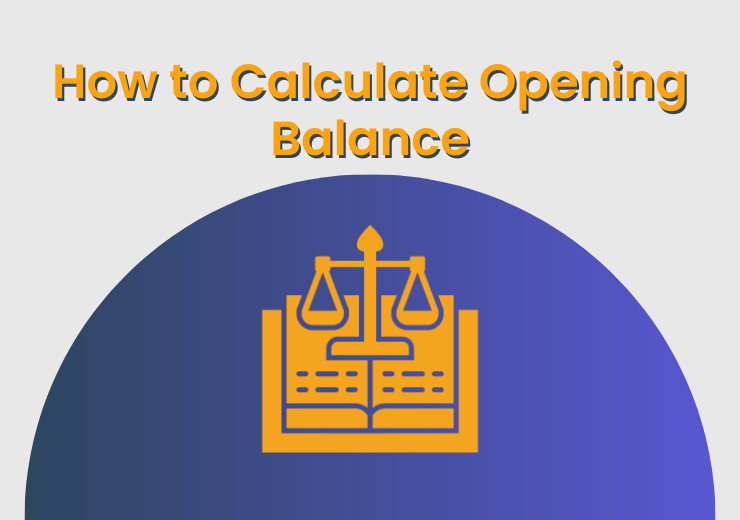Introduction to Opening Balance
The opening balance marks the starting point for a business’s financial records at the commencement of an accounting period. It reflects the cumulative financial position from previous periods and sets the foundation for the current period’s transactions. Whether you’re a business owner, an accountant, or someone interested in financial management, grasping the concept of opening balance is essential.
Why Opening Balance Matters
The opening balance provides insights into a company’s financial health. It outlines the resources owned by the business, the obligations it owes, and the residual interest of the owners. This information guides decision-making processes, helping businesses plan their financial activities and allocate resources effectively.
Components of Opening Balance
The opening balance consists of three key components: assets, liabilities, and equity. These components collectively represent the financial position of the business.
Assets
Assets encompass everything a business owns that holds monetary value. This includes cash, accounts receivable, inventory, property, and equipment.
Liabilities
Liabilities comprise the obligations a business owes to external parties. These can include loans, accounts payable, and other debts.
Equity
Equity represents the residual interest in the business after deducting liabilities from assets. It’s the ownership stake held by the shareholders.
The Opening Balance Formula Explained
The opening balance formula is derived from the accounting equation:
Opening Balance = Assets – Liabilities
This simple formula helps determine the net worth of the business at the beginning of the accounting period.
Calculating Opening Balance: A Practical Example
Let’s consider a practical example to illustrate the opening balance calculation. Imagine a small retail business, XYZ Mart.
- Total Assets: $100,000
- Total Liabilities: $40,000
Using the formula: Opening Balance = Total Assets – Total Liabilities Opening Balance = $100,000 – $40,000 Opening Balance = $60,000
In this example, XYZ Mart’s opening balance for the accounting period is $60,000.
Common Mistakes to Avoid
When calculating opening balances, businesses often make mistakes that can impact their financial reporting accuracy. Some common errors include:
- Omitting Accounts: Failing to include all accounts in the calculation can lead to an incomplete opening balance.
- Inaccurate Asset Valuation: Incorrectly valuing assets can distort the opening balance figure.
- Ignoring Liabilities: Neglecting to account for all liabilities can result in an artificially inflated opening balance.
Importance of Accurate Opening Balance
An accurate opening balance is crucial for maintaining reliable financial records. It forms the basis for financial statements, such as the balance sheet and income statement, which guide important business decisions.
Tips for Managing Opening Balances Effectively
- Regular Reconciliation: Reconcile opening balances regularly to catch and rectify any discrepancies.
- Detailed Documentation: Maintain detailed records of all accounts to ensure accurate opening balance calculation.
- Automation: Consider using accounting software to automate opening balance calculations and reduce manual errors.
The Impact of Opening Balance on Financial Statements
The opening balance directly influences financial statements. It dictates the initial figures for assets, liabilities, and equity, which subsequently affect balance sheets and income statements.
Using Accounting Software for Opening Balance Calculations
Modern accounting software simplifies the process of calculating opening balances. These tools offer features that allow businesses to enter account information and generate accurate opening balance figures swiftly.
How Opening Balances Affect Business Decisions
Opening balances provide a snapshot of a company’s financial health at the beginning of an accounting period. This information influences decisions related to budgeting, investment, and resource allocation.
Analyzing Changes in Opening Balance Over Time
By comparing opening balances from multiple periods, businesses can identify trends and patterns. Analyzing these changes helps in making informed financial decisions.
Strategies for Dealing with Negative Opening Balances
In some cases, a business might have a negative opening balance, indicating more liabilities than assets. To address this, businesses can implement strategies such as reducing expenses, renegotiating debts, or injecting additional capital.
Conclusion
Understanding how to calculate the opening balance is essential for maintaining accurate financial records and making informed business decisions. The opening balance serves as the foundation upon which a company’s financial activities for the accounting period are built.
FAQs
1. What is the opening balance in accounting?
The opening balance in accounting is the initial financial position of a business at the start of an accounting period.
2. How is the opening balance calculated?
The opening balance is calculated by subtracting the total liabilities from the total assets.
3. Why is the opening balance important?
The opening balance provides insights into a company’s financial health and serves as the basis for financial reporting and decision-making.
4. Can the opening balance be negative?
Yes, a negative opening balance can occur if a business’s liabilities exceed its assets.
5. How can I ensure accurate opening balances?
Maintain detailed records, reconcile accounts regularly, and consider using accounting software to streamline the calculation process.

